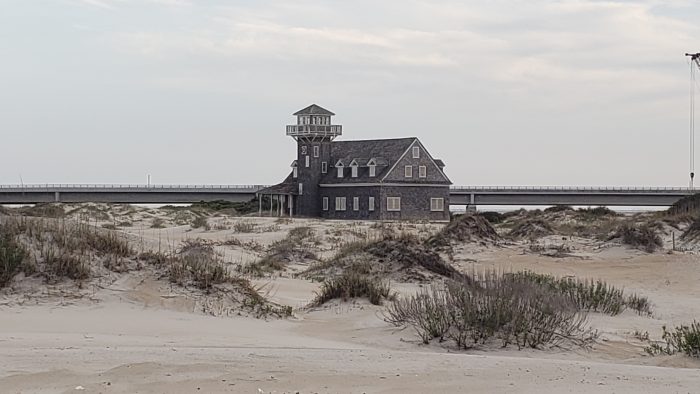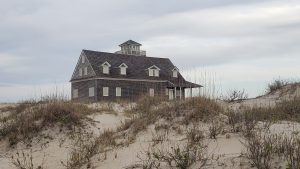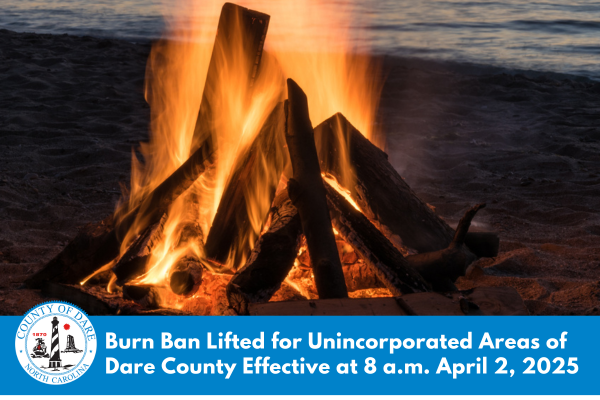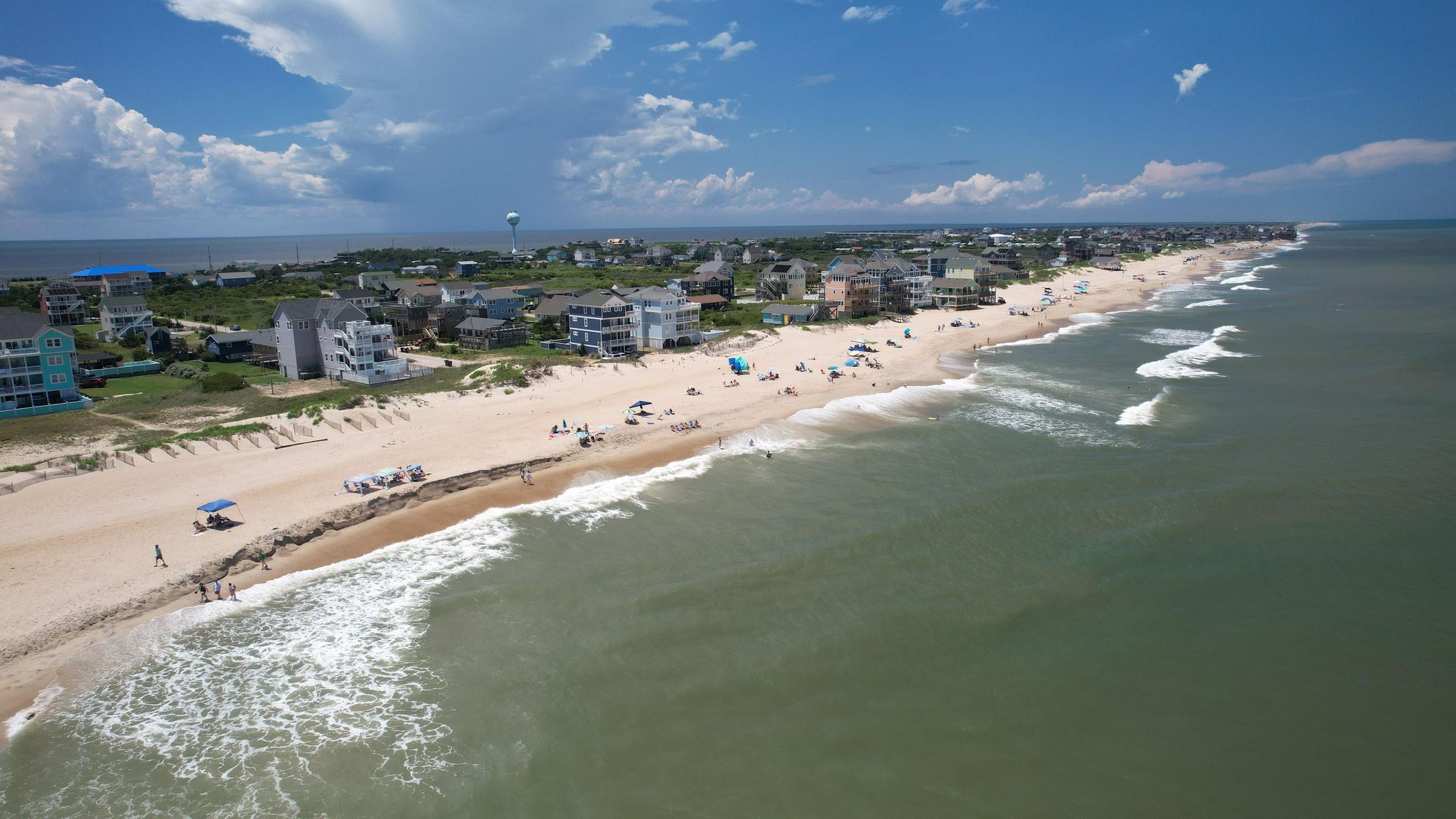Island History: A spotlight on stories from the Outer Banks’ Life-Saving Service

The Chicamacomico Life-Saving Station (CLSS) is celebrating its 150th anniversary this year, as one of the seven original Life-Saving Stations to be built in North Carolina in 1874.
As such, the Chicamacomico Life-Saving Station and Historic Site in Rodanthe will be sharing stories about the seven 1874 Outer Banks stations in the months ahead, leading up to the official October celebration of the United States Life-Saving Stations’ 150th anniversary in the state.
The following is the next of these Life-Saving Station feature articles to honor the #LegacyofLifeSaving, written by Jen Carlson for CLSS.
A Place of Refuge – A historic rescue by the Oregon Inlet Life-Saving Station
On November 19, 1892, a northwest gale drove a schooner named Irene Thayer up onto the beach about half a mile southeast of the Oregon Inlet Life-Saving Station.
Within thirty minutes, not one but two stations responded to the wreck and were on site ready to assist those on the stranded vessel. In addition to the crew from Oregon Inlet, led by Keeper Macajah W. Etheridge, Keeper Richard Etheridge and the surfman from the Pea Island Life-Saving Station were also on hand.

Rapidly, the crews worked together to establish a line of communication with the vessel by setting up the breeches buoy apparatus and they transported the six sailors to safety without any mishap. The sailors were housed at the Oregon Inlet Station for two days and were provided clothing from the supply distributed to the stations by the Women’s National Relief Association.
As weather permitted, the two crews also salvaged what could be saved from the schooner. After departing for home, Captain S. H. Wall sent a letter of gratitude to the General Superintendent’s Office. He expressed his thankfulness for not only the treatment of his crew but also for the existence of the United States Life-Saving Service, “I’m thankful to know that I belong to a nation that furnishes such men and houses of refuge for the benefit of seafaring men.”
All in a Day’s Work at the Caffey’s Inlet Life-Saving Station in Duck
Sometimes it’s about not giving up: On October 14, 1896, it took the efforts of two surfmen on patrol to avert a disaster.
During the fourth watch of the night, the south patrolman from the Caffey’s Inlet Life-Saving Station spotted a steamer in dangerous proximity to shore and heading straight for it. He burned not one but two Coston signals trying to alert the vessel of the danger, but his warnings were unheeded. The north patrolman from the Paul Gamiels Hill Station also spotted the steamer and saw the flares from the first surfman. He lit a third flare in warning and, finally, the steamer changed course and safely passed along the shoreline.
For more stories like these, visit the Chicamacomico Life-Saving Station where history is alive.














